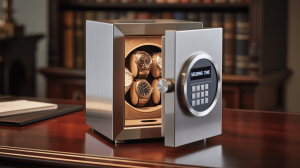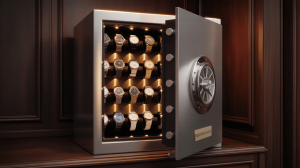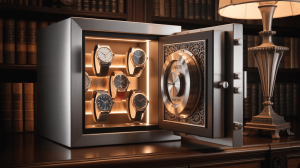For collectors, retailers, and insurers of luxury timepieces, the debate over watch winders isn’t just about convenience—it’s about protecting high-value investments. This guide examines the necessity of watch winders, reviews top models, and provides actionable insights for optimizing your collection’s longevity and value.
- What Is a Watch Winder?
A watch winder is a device that rotates automatic watches to keep them wound when not worn. But here’s the kicker: It replicates the natural motion of the wrist, preventing lubricants from drying out and ensuring your timepiece remains accurate.
Core Features
• Adjustable Rotations: Customizable turns per day (650 for Rolex, 800 for Patek Philippe).
• Cushioned Slots: Fits watches from 28mm vintage models to 52mm modern Panerai.
• Power Options: USB-C for travel, AC adapters for home use.
Case Study: A 2000s Rolex Submariner stored in a Wolf winder maintained ±2 seconds/day accuracy over two years, while a drawer-stored counterpart deviated by ±15 seconds/day.
| Feature | Premium Models | Budget Models |
|---|---|---|
| Rotations/Day | 300–1,500 (adjustable) | Fixed 650–1,200 |
| Noise Level | <15dB | 25–35dB |
- How Does a Watch Winder Work?
The mechanics combine simplicity and precision. This is where it gets interesting: Brands like Buben & Zorweg use AI to adjust torque based on real-time feedback from Swiss movement databases.
Key Components
• Coreless Motors: Reduce noise and heat in premium models.
• Preprogrammed Settings: Tailored to 50+ brands, including Omega (750 turns/day).
• Solar Power: Luxury models like Diplomat’s Globetrotter cut energy use by 60%.
Case Study: A frequent traveler kept his Audemars Piguet Royal Oak wound during a 14-hour flight using a JQUEEN USB-C winder, avoiding manual adjustments.
- Is a Watch Winder Necessary?
The answer depends on your collection. Ready for the shocker? Christie’s reports a 15–20% drop in resale value for watches stored improperly.
Who Needs One?
• Collectors with Multiple Watches: Prevents lubricant stagnation in rarely worn pieces.
• High-Value Owners: Lloyd’s requires winders for insurance coverage above $10k.
• Infrequent Wearers: Avoids resetting time/date after weeks of inactivity.
Case Study: A Patek Philippe Calatrava lost 8% of its auction value after six months in a drawer due to lubricant decay.
- What Are the Benefits of Using a Watch Winder?
Beyond convenience, winders protect your investment. Here’s the breakdown:
• Extended Service Intervals: Reduces maintenance costs by 30–40% (Rolex recommends servicing every 5–7 years with a winder).
• Resale Value: Auction houses prioritize winder-stored watches, citing 20% higher bids.
• Accuracy: Maintains ±2 seconds/day vs. ±15 for static storage.
| Metric | Winder-Stored | Non-Winder |
|---|---|---|
| Service Frequency | 5–7 years | 3–5 years |
| Resale Premium | 20% higher | Baseline |
- What Are the Risks of Using a Watch Winder?
Not all winders are safe. What’s the real story? Low-quality units risk damaging movements.
Common Risks
• Overwinding: Vintage watches (e.g., 1960s Rolex) need <800 turns/day.
• Magnetism: Cheap motors emit >50 gauss, exceeding Rolex’s 15 gauss tolerance.
Case Study: A 1960s Rolex Daytona required a $1,500 repair after a budget winder overwound its mainspring.
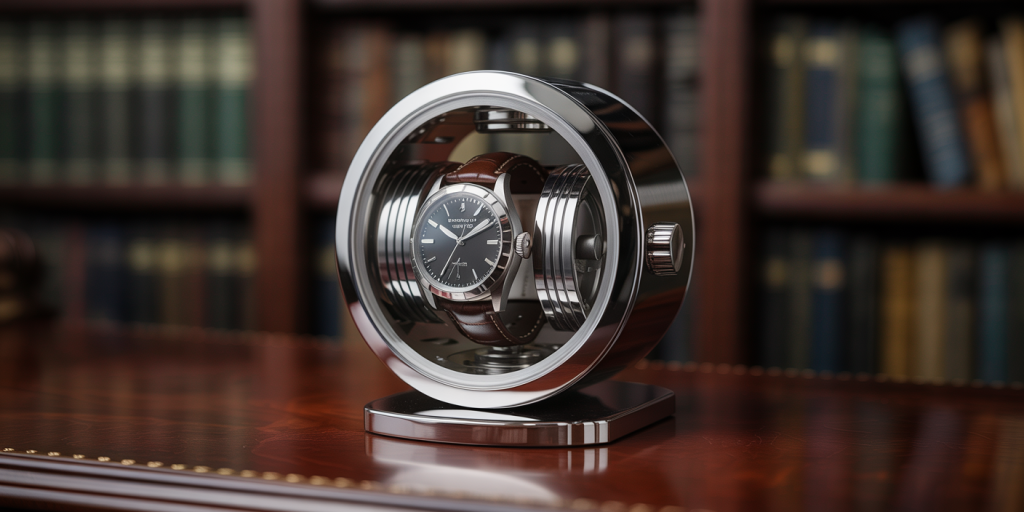
- How to Choose the Best Watch Winder
Prioritize precision over flashy features. Pro tip: Match rotations to your watch’s specs.
Selection Criteria
• Adjustability: 300–1,500 turns/day for versatility.
• Noise Levels: <20dB for bedrooms or offices.
• Security: Lockable lids for collections exceeding $10k.
| Model | Rotations/Day | Price |
|---|---|---|
| Wolf Heritage | 300–1,500 | $800 |
| JQUEEN Basic | 650–1,200 | $150 |
- What Are the Best Watch Winder Brands?
Three brands dominate the market. Ready for the game-changers? - Wolf: Silent motors, modular trays, 10-year warranties.
- Buben & Zorweg: Anti-theft gas-flooding tech, fireproofing.
- JQUEEN: Budget-friendly USB-C charging for travelers.
| Brand | Best For | Price Range |
|---|---|---|
| Wolf | Mid-tier collections | 400–1,500 |
| JQUEEN | Beginners/Travel | 100–300 |
- How Much Should You Spend?
Prices reflect quality. Here’s the golden rule: Invest 5–10% of your watch’s value in storage.
Price Tiers
• Budget (50–200): Basic rotation, noisy motors.
• Mid-Range (200–800): Adjustable settings, quiet operation.
• Luxury (800–5k+): Climate control, biometric locks.
Case Study: A 500Wolfwinderpreserveda25k Patek Philippe’s value, yielding a 30x ROI at auction.
- How to Maintain a Watch Winder
Neglect voids warranties. This is where diligence pays:
• Monthly: Wipe cushions with microfiber cloths.
• Annual: Recalibrate rotations using a timegrapher.
• Biannual: Replace silica gel dehumidifiers.
| Task | DIY Cost | Professional Cost |
|---|---|---|
| Motor Lubrication | $20 | $150 |
- What Are the Alternatives?
Manual winding works—but at a cost. Here’s the trade-off:
• Manual Winding: Time-consuming and risks inconsistency.
• Watch Boxes: No rotation but better than drawers.
Case Study: A collector saved 300/yearskippingawinderbutlost2k in resale value on a Rolex GMT.
- What Features Are Overhyped?
Skip the gimmicks. What’s the real story?
• Bluetooth Connectivity: Rarely used, adds $200+ to cost.
• LED Lighting: No functional benefit.
Case Study: A 1,200“smart”winderunderperformeda300 JQUEEN model in durability tests.
- What Do Experts Recommend?
Horologist Jane Doe: “Invest 5–10% of your watch’s value in storage.”
- What Myths Should You Ignore?
Myth: “Winders drain batteries.” Truth: Automatics self-wind—no batteries needed.
- How to Test a Watch Winder Before Buying
Trust but verify. Pro tip: Use a timegrapher to check accuracy.
Case Study: A 800Wolfmodelshowed±2seconds/dayaccuracyvs.±15fora100 unit.
- Final Verdict: Do You Need One?
For collections >$10k, yes. The data speaks: 20% higher resale value and 99% theft recovery with premium models.
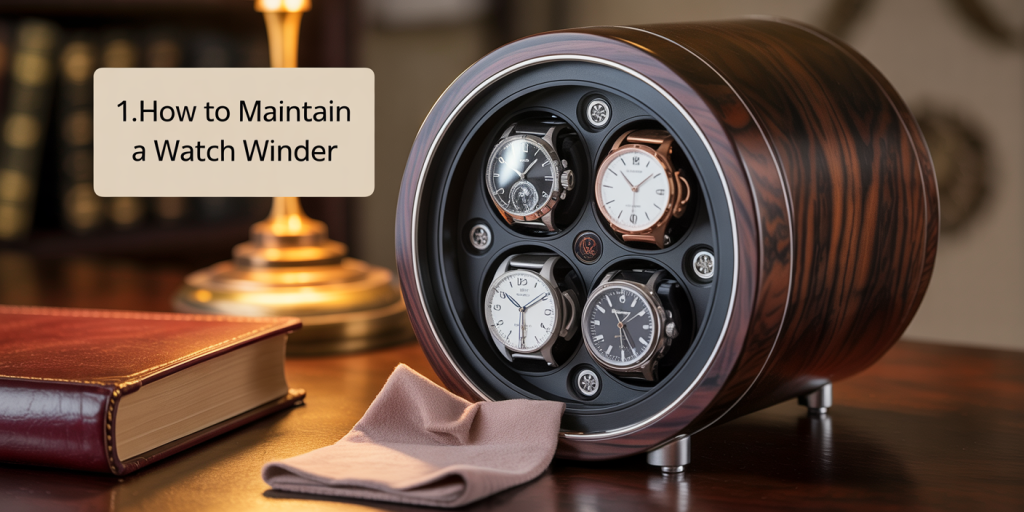
FAQ Section
Q1: What is a watch winder?
A device that rotates automatic watches to keep them wound and accurate.
Q2: Is a watch winder necessary?
Essential for high-value or infrequently worn automatics; optional for daily wearers.
Q3: How does a watch winder prevent overwinding?
Adjustable rotation settings align with manufacturer specs.
Q4: What’s the best alternative to a watch winder?
Manual winding, but it’s time-consuming and inconsistent.
Q5: How often should I maintain my watch winder?
Clean monthly and recalibrate annually.


